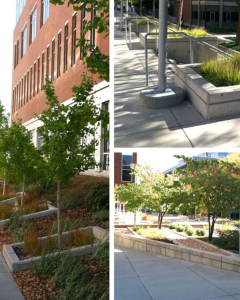 The Leaning Tower of Pisa is one of history’s most famous examples of both engineering failure and resilience. Construction began in 1173, but within just five years, the 56-meter tower started tilting due to the site’s unstable subsoil and inadequate foundation. Over the years, engineers attempted to compensate for the lean by adjusting the structure’s design. They even built one side shorter than the other, so the tower curved and compensated for the lean. However, the subsoil conditions continued to cause problems, and the lean continued. Over the centuries, various efforts have been made to stabilize it, including a significant intervention in 1990 led by a team of experts commissioned by the Italian government.
The Leaning Tower of Pisa is one of history’s most famous examples of both engineering failure and resilience. Construction began in 1173, but within just five years, the 56-meter tower started tilting due to the site’s unstable subsoil and inadequate foundation. Over the years, engineers attempted to compensate for the lean by adjusting the structure’s design. They even built one side shorter than the other, so the tower curved and compensated for the lean. However, the subsoil conditions continued to cause problems, and the lean continued. Over the centuries, various efforts have been made to stabilize it, including a significant intervention in 1990 led by a team of experts commissioned by the Italian government.
Most engineers study the Leaning Tower of Pisa at some point in their education because it’s an excellent lesson in how essential it is to understand the ecological conditions of a site before building. Site analysis investigation methods were much more limited in 1173, so no one understood how poor the soil conditions would be for such an ambitious project. If such a project had been attempted today, a site analysis report would have suggested a different building site or stronger foundational supports.
The role of site analysis in landscape architecture
As landscape architects, site analysis is a key component of any project we do. A thorough ecological analysis of the project area provides valuable insights that guide a landscape project’s scope and design. Some of the information our team gleams from a site analysis report includes:
- Topography: It’s crucial to understand the topography of a landscape project site. Our architects need to know the slope, elevation and any features that may affect the overall landscape design.
- Climate: Reviewing past weather patterns and climate conditions helps our team create a sustainable design for the chosen area. We need background information on wind direction, annual rainfall, sunlight exposure, and temperature trends to guide the design. This information allows us to choose appropriate vegetation and landscape elements for the area.
- Soil and underlying geological conditions: Soil testing helps us determine the optimal growing conditions for any vegetation and plan for drainage and structural elements. Digging deeper to understand the underlying geological formations of the site area is also essential for structural integrity.
- Hydrology: How water moves through the site is crucial for any landscape design. In our home state of Utah, where water conservation is always a concern, we investigate site drainage, groundwater conditions, stormwater management and more to conserve water.
- Local vegetation and wildlife: We always try to understand the local ecosystem, including native vegetation and wildlife, to create a design that limits ecological disruptions and is sustainable for the area.
Understanding these factors when preparing a landscape design is essential because once a site is chosen for the project, the existing environmental conditions cannot be changed. Climate patterns, soil composition, and local wildlife are fixed factors that must be accounted for in the design process. By integrating landscape designs with existing site conditions, landscape architects can create resilient, resource-efficient, and aesthetically appealing spaces.
Project highlight: Entrance design for the Spencer F. & Cleone P. Eccles University of Utah Health Sciences Education Building
Our landscape architecture team was hired to create a new entrance design for the Spencer F. & Cleone P. Eccles University of Utah Health Sciences Education Building. One of the goals this design needed to meet was LEED certification, which the university has recently achieved. To create a design in line with those principles, our team needed to understand the local ecological conditions of the site.
The most significant sustainability concerns were water usage and drought tolerance. To meet this need, we studied the specific microclimates of the proposed site and selected native, drought-tolerant plants. We also adjusted the vegetation throughout the site based on sunlight exposure. On the northern and eastern exposures, we planted shade-tolerant plants, while on the southern and western sides, where there is more sun exposure, we installed plants with higher sunlight and heat tolerance. We also minimized the water needed for the vegetation to grow by adding low-growing junipers and native grasses. Instead of installing sod, we choose a rock cobble mulch to reduce water needs.
Utilizing native plants and basing our design around the climate and sun conditions of the project area was key to a sustainable design for this project. We installed a weather-based water system that reduces water consumption by up to 50% to reduce water usage further. The information we gathered during the site analysis portion of the project necessitated each of these factors.
Good landscape design starts with site analysis
A thorough site analysis of a project area is key for good landscape design. Landscape architects like us create sustainable spaces that blend in with their surroundings, conserve resources, and enhance usability by carefully assessing topography, climate, and ecosystems. We can only do this when we know the project site’s ecological conditions. Once we have this information, we implement sustainable design practices that fit the project’s and site’s needs. A site analysis also helps avoid potential surprises, as the architects of the Tower of Pisa experienced. So, if you’re planning a project requiring skilled landscape architects’ expertise, reach out to our team today.








